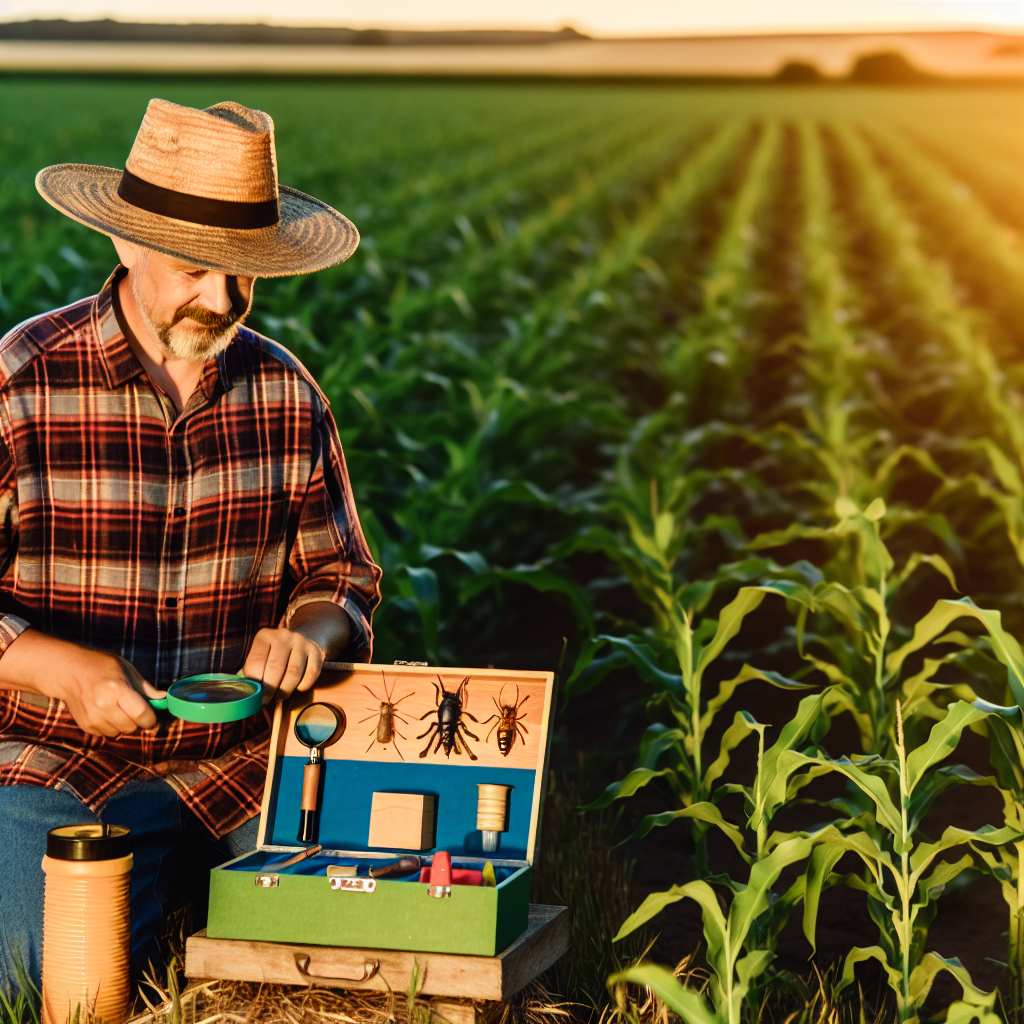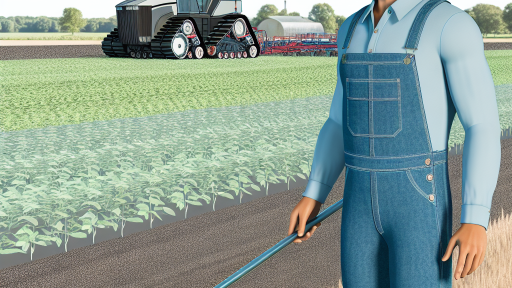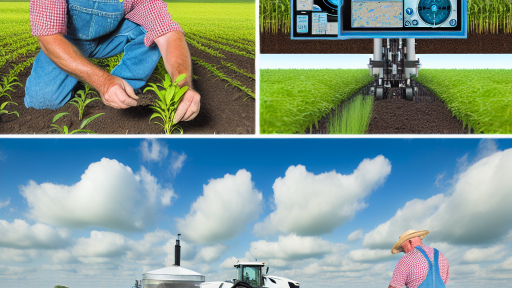Introduction to Integrated Pest Management (IPM)
Definition of IPM
Integrated Pest Management (IPM) is an effective approach to pest control.
It combines various management strategies to reduce pest populations.
IPM focuses on maintaining ecological balance in agricultural systems.
Importance of IPM
Utilizing IPM can significantly enhance crop yield and quality.
This approach minimizes the reliance on chemical pesticides.
Consequently, it reduces the risks to human health and the environment.
Farmers benefit from increased sustainability in their practices.
Core Principles of IPM
IPM emphasizes prevention, monitoring, and control of pests.
Effective prevention includes cultural, mechanical, and biological methods.
Regular monitoring helps identify pest populations and damage levels.
Finally, control measures should aim for effective and economical results.
Benefits of Implementing IPM
Implementing IPM enhances biodiversity across the farm.
This approach fosters a balanced ecosystem among crops and pests.
Moreover, IPM practices can lead to economic benefits for farmers.
Farmers often experience reduced costs associated with pesticide use.
Transform Your Agribusiness
Unlock your farm's potential with expert advice tailored to your needs. Get actionable steps that drive real results.
Get StartedThus, IPM is not just a method, but a holistic approach to farming.
Assessing Your Farm’s Unique Needs
Understanding Your Farm’s Characteristics
Each farm has distinct characteristics that influence management decisions.
Soil type plays a crucial role in crop selection and pest management.
Additionally, knowing your climate conditions helps identify potential pests.
Microclimates can vary within a single farm, affecting plant health.
Identifying Pest Pressures
Pest pressures vary by region and crop type.
Regular scouting helps you monitor pest levels and their impact.
Consider historical data to assess potential pest outbreaks.
Incorporate pest-resistant crop varieties to reduce pressures.
Evaluating Resource Availability
Your farm’s resources affect the choice of IPM tools.
Assess the availability of water for irrigation during dry seasons.
Evaluate your labor capacity for hands-on management tasks.
Financial resources influence the types of tools you can adopt.
Integrating Diverse Approaches
A holistic approach combines different IPM strategies effectively.
Consider cultural practices, biological controls, and chemical applications together.
Ensuring diversity in your management strategies promotes resilience.
Engaging with Experts
Consulting with agronomists can provide valuable insights.
Local agricultural extension services offer tailored advice and resources.
Participating in farmer cooperatives allows sharing experiences.
Networking with peers enhances your understanding of effective practices.
Types of IPM Tools
Biological Options
Biological IPM tools use living organisms to control pests.
This approach enhances natural pest control mechanisms.
Beneficial insects, such as ladybugs, can manage aphid populations.
Furthermore, nematodes help in controlling soil-borne pests.
Showcase Your Farming Business
Publish your professional farming services profile on our blog for a one-time fee of $200 and reach a dedicated audience of farmers and agribusiness owners.
Publish Your ProfileBy introducing pathogens, like fungi, farmers can target specific pests.
Using microbial agents promotes sustainability in agriculture.
Chemical Options
Chemical IPM tools include pesticides and herbicides.
Farmers can choose selective chemicals to minimize non-target effects.
For instance, insect growth regulators (IGRs) disrupt pest development.
Moreover, systemic insecticides can transport through plant tissues.
Farmers should follow guidelines to reduce chemical residues.
Integrating chemical and biological tools can enhance effectiveness.
Mechanical Options
Mechanical IPM tools involve physical barriers and traps.
For example, insect netting can protect crops from pests.
Sticky traps capture flying insects for monitoring purposes.
Additionally, crop rotation disrupts pest life cycles effectively.
Regular tillage can expose soil-borne pests to predators.
Implementing these practices minimizes reliance on chemical inputs.
Find Out More: Carbon Sequestration Technologies for Modern Farms
Evaluating Effectiveness: How to Measure the Success of IPM Tools
Setting Clear Objectives
Start by defining what success looks like for your IPM tools.
Establish specific, measurable, achievable, relevant, and time-bound goals.
For instance, aim to reduce pest populations by a certain percentage.
Additionally, consider improving crop yield or quality as an objective.
Monitoring Pest Populations
Regularly observe pest populations to assess IPM effectiveness.
Use traps and visual inspections for accurate data collection.
Track any changes in pest numbers over time to identify trends.
This data will help you understand how well your tools are working.
Assessing Crop Health
Evaluate the overall health of your crops as a success indicator.
Look for signs of stress or disease in your plants.
Healthy plants generally indicate effective pest management.
Moreover, document any observed improvements in crop growth and vitality.
Gathering Yield Data
Compare yield data before and after implementing IPM tools.
Collect harvest data regularly to analyze crop production.
Calculate the difference to quantify the impact of your IPM strategies.
This will provide a clear picture of your tools’ effectiveness.
Economic Analysis
Conduct a cost-benefit analysis to evaluate economic impacts.
Measure costs associated with IPM tools versus benefits gained.
Consider factors like reduced pesticide use and increased yields.
This analysis will help justify ongoing investments in IPM strategies.
Collecting Feedback
Regularly gather feedback from farm workers and experts.
Assess their observations regarding the IPM tools’ performance.
Involvement from your team can reveal unexpected insights.
Additionally, use surveys or informal discussions to gather their input.
Adjusting Strategies
Be prepared to modify your strategies based on data collected.
Showcase Your Farming Business
Publish your professional farming services profile on our blog for a one-time fee of $200 and reach a dedicated audience of farmers and agribusiness owners.
Publish Your ProfileRegular reviews allow you to identify any gaps in effectiveness.
Use insights gained to refine your IPM approach continually.
This adaptability ensures your tools remain relevant and effective.
You Might Also Like: Biodiversity’s Impact on Sustainable Food Production
Environmental Impact: Choosing Sustainable IPM Practices
Understanding Integrated Pest Management (IPM)
Integrated Pest Management (IPM) focuses on sustainable approaches to pest control.
This strategy combines cultural, biological, and chemical practices.
Furthermore, it minimizes risks to human health and the environment.
Recognizing Environmental Benefits
Sustainable IPM practices improve soil health and biodiversity.
They reduce chemical use, thus lowering toxicity levels in the ecosystem.
Moreover, these practices can enhance crop resilience against pests and diseases.
Implementing Sustainable Practices
Start with regular monitoring to identify pest populations accurately.
Use resistant crop varieties to naturally deter pests.
Consider cultivating beneficial insects that prey on harmful pests.
In addition, rotate crops to disrupt pest life cycles.
Finally, apply pesticides only when pest levels exceed established thresholds.
Evaluating IPM Tools
Choose tools that align with sustainability goals.
For instance, natural insecticides can be effective and environmentally friendly.
Therefore, evaluate the life cycle impacts of all products used.
This approach requires thorough research and testing before widespread application.
Education and Training
Invest in training for yourself and your team.
Awareness of IPM principles encourages effective implementation.
Attend workshops and engage with local agricultural extension services.
Moreover, collaborate with other farmers to share experiences and knowledge.
Measuring Environmental Impact
Regularly assess the environmental effects of your IPM practices.
Use indicators such as biodiversity levels and soil health metrics.
This evaluation will allow adjustments to enhance sustainability.
Continued monitoring fosters a culture of improvement and responsibility.
Explore Further: 5 Sustainable Farming Techniques That Are Changing the Game

Cost Analysis: Budgeting for IPM Tools and Implementation
Understanding IPM Tool Costs
Integrated Pest Management (IPM) tools come with varying costs.
These costs depend on the tools chosen and your farm’s size.
Furthermore, initial investments may vary based on technology levels.
Assessing Your Budget
Start by determining your overall budget for pest management.
Consider both fixed and variable costs associated with IPM tools.
Fixed costs include initial purchases of equipment or software.
Variable costs cover ongoing maintenance and operational expenses.
Calculating Return on Investment (ROI)
Calculate the potential ROI for each IPM tool you consider.
Assess how each tool can reduce pest-related losses.
Additionally, factor in increases in crop yield and quality.
Comparing costs and benefits is essential for smart budgeting.
Exploring Funding Options
Look for grants or subsidies that support sustainable practices.
Showcase Your Farming Business
Publish your professional farming services profile on our blog for a one-time fee of $200 and reach a dedicated audience of farmers and agribusiness owners.
Publish Your ProfileGovernment programs often provide funding for IPM implementation.
Local agricultural co-ops may also offer resources and support.
Long-Term Financial Planning
Plan for long-term costs associated with IPM tools.
Regular updates and potential new tools should be included in budgeting.
Additionally, consider the fluctuating prices of materials and technology.
Getting Expert Advice
Consult with farming experts or agricultural extension agents.
They can provide insights into effective budgeting strategies.
Moreover, their experience can guide you in selecting suitable tools.
Learn More: Eco-Friendly Farming: How to Cut Costs and Save the Planet
Case Studies: Successful IPM Tool Usage in Different Farming Systems
Cereal Crop Production
Farmers in Iowa have adopted IPM practices to manage pests effectively.
They utilize crop rotation to disrupt pest life cycles.
Additionally, they implement pheromone traps to monitor pest populations.
This combination reduces chemical pesticide reliance significantly.
Vegetable Farming
In California, organic farmers have successfully integrated diverse cropping systems.
Cover crops enhance soil structure and suppress weeds.
Beneficial insects, such as ladybugs, control aphid populations.
This harmonious approach increases crop yields while minimizing inputs.
Fruit Orchards
Growers in Florida use IPM strategies to protect citrus trees.
They employ trap crops to attract pests away from main crops.
Regular scouting helps detect pest issues early.
As a result, fewer pesticides are necessary for effective control.
Livestock Management
Farmers in Texas manage tick populations on cattle using integrated approaches.
They rely on biological controls like guineafowl to reduce ticks naturally.
Furthermore, rotational grazing prevents tick infestations from escalating.
This minimizes livestock disease risks while promoting animal health.
Building a Comprehensive IPM Plan
Understanding Integrated Pest Management
Integrated Pest Management is a strategic approach to pest control.
It combines various management tactics to minimize pests efficiently.
This ensures environmental stewardship while safeguarding crops.
A successful IPM plan considers the entire ecosystem.
Farmers must assess pest populations and their impacts regularly.
Identifying Pest Problems
Begin by conducting thorough field surveys.
Look for signs of pest activity and damage in crops.
Accurate identification of pests is crucial for effective management.
Additionally, documenting pest life cycles aids in timing interventions.
Utilize technology to enhance monitoring strategies.
Selecting Appropriate Tools
Choose tools based on the specific pest challenges your farm faces.
Physical controls like traps can monitor and reduce pest populations.
Chemicals, used judiciously, can help manage severe infestations.
Biological controls harness natural predators to keep pests in check.
Ensure that selected tools align with your sustainability goals.
Showcase Your Farming Business
Publish your professional farming services profile on our blog for a one-time fee of $200 and reach a dedicated audience of farmers and agribusiness owners.
Publish Your ProfileImplementing Cultural Practices
Integrate cultural practices to create less favorable conditions for pests.
Crop rotation can disrupt pest life cycles effectively.
Maintaining soil health supports plant vigor against pest attacks.
Moreover, proper irrigation and sanitation prevent pest problems.
Monitoring and Evaluation
Continuous monitoring is essential to assess the effectiveness of your IPM plan.
Track pest populations and their response to management actions.
Modifications may be necessary as conditions change.
Regularly reviewing your strategies helps improve future pest management.
Engage with local agricultural experts for ongoing support and advice.
Additional Resources
Control Mechanisms | National Invasive Species Information Center




